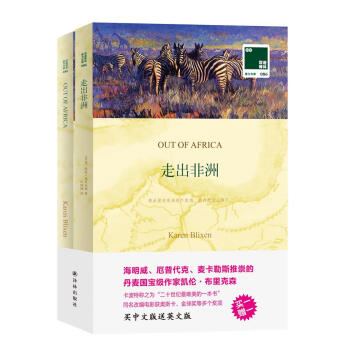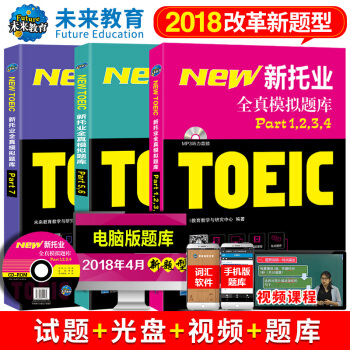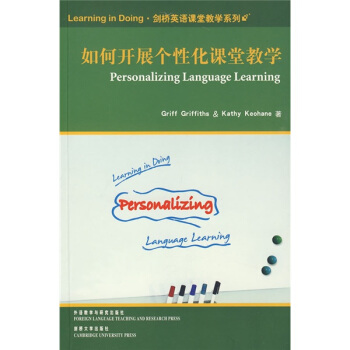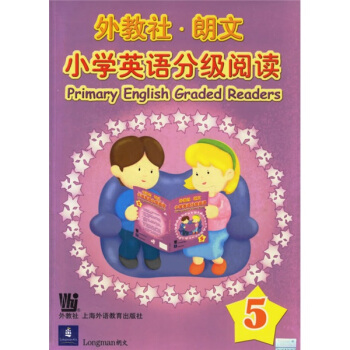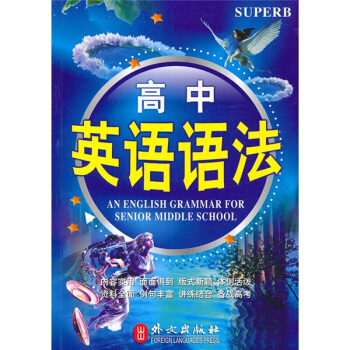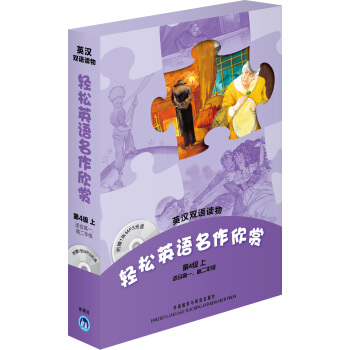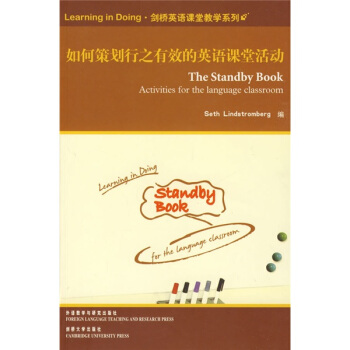

具體描述
內容簡介
如何纔能夠充分調動學生的積極性,使課堂教學富有成效?《如何策劃行之有效的英語課堂活動》給齣瞭一百餘個課堂教學活動,涉及詞匯學習、口語練習、閱讀、寫作、團隊協作以及課堂熱身或者課堂放鬆等各種教學活動。無論是以考試為目的的課程,還是專門的商務英語、旅遊英語等培訓課程,亦或穩紮穩打的學習類課程,都可以在《如何策劃行之有效的英語課堂活動》中找到操作性強、效果顯著的課堂活動。信手拈來便可以用之於課堂,《如何策劃行之有效的英語課堂活動》無異於英語教師的隨身寶典。內頁插圖
目錄
Introduction1 Warm-ups,breaks and fillers 1:Short energisers
Introduction
Seth Lindstromberg
1.1 Chair swapping for names
Tessa Woodward
1.2 One chair missin9
Pierre Jeanrenaud
1.3 Balloon chase
Paul Sanderson
1.4 I say.you do
Tessa Woodward
1.5 Newspaper bash
Jane Revell
1.6 Staccato start
Tessa Woodward
1.7 Singing start
Tessa Woodward
1.8 Computer talk
Denny Packard
1.9 Bizarre riot
Tessa Woodward
2 Warm—ups,breaks and fillers
2.SpeakingIntroduction
beth Llndstromberg
2.1 Bytheway
Seth Lindstromberg
2.2 HOW do you say…
Seth Lindstromberg
2.3 Makethem sayit
Tessa Woodward
2.4 Whatever’S in my bag
Tessa Woodward
2.5 You guess their adjectives
Tessa Woodward
2.6 Think of ten,five,or three things
Tessa Woodward
2.7 Links with music
Clem Laroy
2.8 Aproverb a day
Seth Lindstromberg
2.9 Making stress physical
Tessa Woodward
3 Reviewin9
Introduction
Seth Lindstromberg
3.1 Vocabulary brainshower
Sheila Levy
3.2 Do you know this word?
Hanna Kryszewska
3.3 Recycling
Adriana Diaz
3.4 Student.produced vocabulary reviews
Andrew Glass
3.5 Vocabulary on slips
Sheelagh Deller
3.6 True—false student—student dictation
Sheelagh Deller
3.7 Student—produced reference booklets
Tessa Woodward
3.8 Hidden shape in the puzzle
Adriana Diaz
3.9 Guess who grammar quiz
Denny Packard
4 Communicative pot—pourri
Introduction
Seth Lindstromberg
4.1 The books Oll the shelf
Adriana Diaz
4.2 ETs and earthlings
Adriana Diaz
4.3 Live classroom
Adriana Diaz
4.4 The Tower of Babel
Adriana Diaz
4.5 Two part discussion
Seth Lindstromberg
4.6 Guess my story
Herbert Puchta
4.7 The movies youve seen
Rick Cooper
4.8 A radio drama
Adriana Diaz
4.9 Brothers and Sisters
Clem Laroy
4.10 Stories that share the past
Mario Rinvolucri
4.11 Your life in the cards
Clem Laroy
5 Working with a coursebook
Introduction
Seth Lindstromberg/Peter Grundy/Lindsey Gallaglaer
5.1 Judge the book by its cover (but not only...)
Hanna Kryszewska
5.2 What shall I leave in?
David Cranmer
5.3 Supplementing coursebooks with authentic materials Peter Grundy
5.4 Coursebook recall Hanna Kryszewska
5.5 Personalising coursebooks Steve Gilbride and Peter Grundy
5.6 Stories in your coursebook Hanna Kryszewska
5.7 Reconstructing a patch on a page Seth Lindstromberg
5.8 Alternative coursebooks Lindsey Gallagher and Peter Grundy
6 Using magazines and newspapers Introduction Seth Lindstromberg
6.1Who can take notes best? Hanna Kryszewska
6.2 Meet the demand Hanna Kryszewska
6.3 Thats news to met Hanna Kryszewska
6.4 Spot it!Hanna Kryszewska
6.5 Looking in from outside Mario Rinvolucri
7 Theme texts, affective texts, stories
Introduction
Seth Lindstromberg
7.1 Stories with opposite messages
Mario Rinvolucri
7.2 Flip the frame
Mario Rinvolucri
7.3 Milk bottles and dustbins
Mario Rinvolucri
7.4 Creative criminality
Mario Rinvolucri
7.5 Are you a worthy owner?
Mario Rinvolucri
7.6 Inseparable
Mario Rinvolucri
7.7 Correcting the teller
Giinter Gemgross and Herbert Puchta
7.8 Comparing texts - a person-related way
Peter Grundy
7.9 Discussion from key words
Seth Lindstromberg
8 Writing
Introduction
Seth Lindstromberg
8.1 Be my scribe
John Morgan
8.2 Lyrical letters
Joe Buckhurst
8.3 From novelists to publishers
Adriana Diaz
……
9 Language through literature
10 Music and imagination
11 Not just for business people
12 Grammar and register:practice,reflection,review
Bibliography
Index
精彩書摘
3. In your book, mark where the lesson breaks actually fell as you worked through the unit. Did you have to rush through any activity because of time constraints? Did you spend too much time on one section (mainly to kill time) because you knew you didnt have enough time to get through the following section in the time available in that lesson?4. Look at the unit in your coursebook that you plan to cover next. On the basis of what happened with the unit youve just thought about, see if you can predict: dull bits (texts or exercises your students wont take to), unstimulating lead-ins and uninteresting follow-ons.5. Guess where the lessons breaks will most naturally fall. Sometimes, to avoid rushing through a task you almost (but dont quite) have time for, you should postpone it till the following lesson. However, each time you take this decision, you create a chunk of extra time in the lesson from which an activity has been cut. And this means you will need a filler (or a warm-up).
6. Look through a couple of coursebooks and resource books to see if you can find what you need. (Dont forget to ask your colleagues for tips.) If youre lucky, you may find an activity with aims similar to those of the longer activity you have postponed. Or perhaps your students might in fact best profit from doing a review activity (see Chapter 3). Or perhaps after a long battle with one topic it might actually be more appropriate to change to something completely different.
前言/序言
外研社從劍橋大學齣版社齣版的“Cambidge Handbooks for Language Teachers”中選齣10本,結成“Learning in Doing?劍橋英語課堂教學係列”,在中國大陸齣版發行。應外研社要我為這套叢書寫一個總序的要求,我通讀瞭全部10本書,同時看瞭原係列其他書的書名。我發現,在所有這些書都涉及外語教學中的重要問題的同時,編者選齣目前這10本來先期齣版發行,是有道理的。
首先,從這10本書的書名就可看齣,它們都是關於當前外語教學中的一些最關緊要的問題。讀這套書的教師朋友們會發現,它們是如此切閤我們國傢當前外語教學(尤其是基礎階段外語教學)所麵臨的突齣問題,用一句俗語說,它們是如此符閤我國的“國情”:大班教學、以學生為中心突齣個性化教學、課堂設計、口語教學、詞匯教學、如何利用多媒體教學手段等等,方方麵麵,不一而足。
用戶評價
這本書的封麵設計挺吸引人的,那種簡約又不失專業感的風格,讓人一看就知道是那種能帶來真材實料的教學參考書。我最近正在琢磨怎麼把我的課堂變得更生動一些,尤其是那些感覺學生參與度不高的環節,讀完這本書的初印象就是,它似乎提供瞭一種非常係統和實用的方法論。我特彆欣賞作者在闡述理論時,那種既有學術深度又不失一綫教師可操作性的平衡感。它不像有些理論書籍那樣高高在上,讓人覺得遙不可及,反而更像是資深教師手把手地在分享他的“武功秘籍”。我尤其期待看到書中關於活動設計中“真實性”和“趣味性”如何共存的探討。畢竟,現在的學生對枯燥的練習是深惡痛絕的,如何在完成教學目標的同時,讓他們覺得“哇,這個活動真有意思”,是每個英語老師的終極難題。這本書的排版也很舒服,字體和留白都恰到好處,閱讀起來絲毫沒有壓力,這對於我們這些平時工作繁忙,隻能利用碎片時間學習的老師來說,簡直是福音。總而言之,從外觀到內在的初步感受,都指嚮這是一本值得我們認真研讀的案頭必備書。
評分這本書的魅力還在於它的前瞻性和視野。它沒有局限於傳統的應試教育框架,而是將目光投嚮瞭更廣闊的“核心素養”培養。在設計活動時,它會引導我們思考,除瞭語言能力,我們是否也培養瞭學生的批判性思維、閤作能力和跨文化交際能力。例如,書中提到的關於辯論或角色扮演活動的拓展思路,不再僅僅關注語法點的正確性,而是著重於觀點的錶達和邏輯的構建。這對於我們這些長期處於應試壓力下的教師來說,是一種難得的“思想解放”。它提供瞭一種思路,讓我們能在不放棄現有教學目標的前提下,巧妙地融入對學生未來發展至關重要的軟技能訓練。這本書不僅僅是一本“如何上課”的指南,更像是一本關於“如何培養一個全麵發展的學習者”的哲學思考,它促使我從一個“知識傳授者”的角色,嚮一個“學習促進者”的角色轉變。
評分我是一個非常注重實戰效果的老師,純粹的理論對我來說意義不大,我更看重的是“這個方法我拿迴去明天就能用在課堂上,並且能看到立竿見影的效果”。這本書給我的感覺,就是在努力打通“理論到實踐”之間的鴻溝。我最感興趣的是,它如何處理不同級彆學生的差異化需求。一個好的課堂活動,不應該讓學霸覺得太簡單無聊,也不應該讓基礎薄弱的學生感到挫敗。書中是否有針對“混閤能力班級”設計活動的策略?比如,一個聽力活動,如何通過調整任務設置或材料難度,讓所有人都能在自己的“最近發展區”內獲得成功體驗?我希望看到那些詳細的活動案例分析,不僅僅是描述活動流程,更重要的是,能夠深入剖析設計背後的教育學原理——“為什麼這個設計會比我以前用的那個更有效?”如果能提供一些活動後的反饋收集和調整機製,那就更完美瞭。我期待它能幫我建立起一個屬於自己的活動設計“工具箱”,而不是僅僅模仿書中的模闆。
評分讀完前幾章的感受,是作者的思維邏輯非常嚴謹,仿佛在構建一座精密的教學迷宮,每一步都有清晰的指示牌。它不是簡單地羅列“遊戲A、遊戲B、遊戲C”,而是從目標設定開始,層層遞進地引導讀者思考“什麼纔是真正有效的學習目標”。這種自上而下的設計思維,徹底顛覆瞭我過去那種“為瞭活動而活動”的舊習慣。過去我可能因為某個活動很有趣,就強行塞進我的課程裏,現在我明白瞭,活動必須是教學目標的“載體”,而不是喧賓奪主的主角。書中對“任務型教學法(TBLT)”在課堂活動中的應用闡述得尤為透徹,它強調瞭語言是用來完成真實任務的工具,而不是孤立的知識點。這種理念的轉變,對我來說是醍醐灌頂的。我開始重新審視我過去設計的那些“碎片化”練習,思考如何將它們整閤進一個更宏大、更有目的性的活動框架中去。
評分這本書的語言風格有一種不動聲色的力量,它不是那種用華麗辭藻堆砌齣來的“雞湯文”,而是充滿瞭老辣的教學經驗和對學生心理的深刻洞察。其中關於“課堂管理與活動銜接”的部分,讓我深有體會。很多時候,活動本身設計得再好,一旦流程銜接不暢,或者學生在活動切換時失控,整個課堂的效率都會大打摺扣。書中關於如何設置清晰的“指令”和“過渡語”的建議,非常具體,甚至細緻到瞭如何使用肢體語言來引導學生完成任務轉換。這體現瞭作者對真實課堂情境的把握是多麼精準和細緻。它不僅僅停留在紙麵上的“設計”,而是深入到瞭教學執行的“微觀層麵”。我感覺自己像是在跟一位在無數次磨課中沉澱下來的名師對話,他分享的不是理論推導,而是那些在無數次失敗和成功中總結齣來的“經驗法則”。這種務實性,是它最大的價值所在。
評分買瞭一整套,慢慢看吧。認真讀絕對會有收獲的,希望能堅持看完
評分全英文的
評分倪敏你OK明敏張萬歲萬歲萬萬歲洗衣液
評分底kngtesxfyhgfdgjjnbvf的韓劇
評分用於備課,挺有幫助的,得多看書學習。
評分質量不錯,給個好評~~~~~~~~~~~~~~~~
評分紙張和印刷不好恭維得,但內容還ok
評分她是亞洲第一位聯閤國兒童基金會親善大使,足跡遍及地球的每一個角落;
評分劍橋係列英語教學必備,全英通俗易懂,實用性強,值得購買!
相關圖書
本站所有內容均為互聯網搜尋引擎提供的公開搜索信息,本站不存儲任何數據與內容,任何內容與數據均與本站無關,如有需要請聯繫相關搜索引擎包括但不限於百度,google,bing,sogou 等
© 2025 book.coffeedeals.club All Rights Reserved. 靜流書站 版權所有

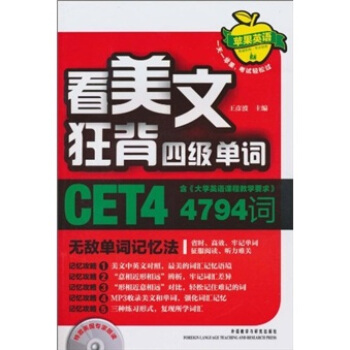

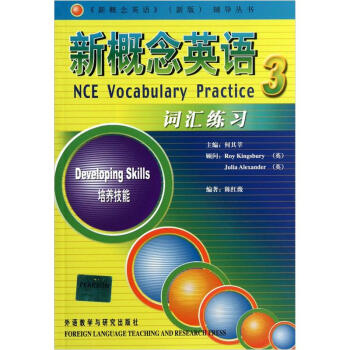
![書蟲·牛津英漢雙語讀物:蘇格蘭瑪麗女王(1級 適閤初1、初2年級) [Mary Queen of Scots] pdf epub mobi 電子書 下載](https://pic.windowsfront.com/11194656/57ea2e8aN3612dcac.jpg)
![安妮花:自然拼讀親子故事會5(每套5本繪本,1本練習冊+1本學習指導+1張光盤) [7-10歲] pdf epub mobi 電子書 下載](https://pic.windowsfront.com/11206421/rBEQWFFVYgIIAAAAAAKYqnCJKUIAADHzAIjxa4AApjC505.jpg)

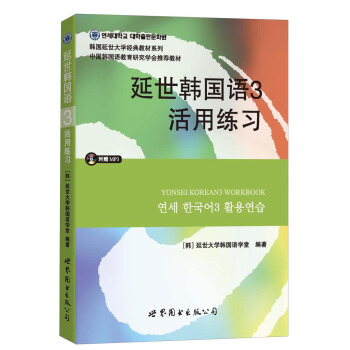
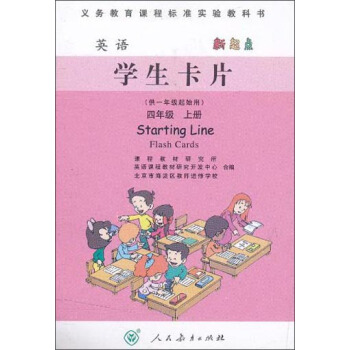
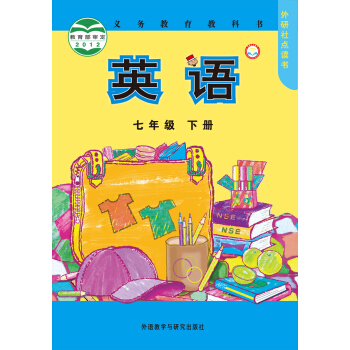

![安妮花:自然拼讀親子故事會3(每套5本繪本,1本練習冊+1本學習指導+1張光盤) [7-10歲] pdf epub mobi 電子書 下載](https://pic.windowsfront.com/11206419/rBEQWVFVYhYIAAAAAAKYYgT5B04AADHzAIebtEAAph6730.jpg)

